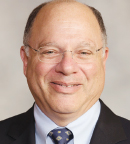Biosimilars are among the newest threads in the fabric of cancer treatment in the United States, and they are spawning numerous questions for oncologists and patients with cancer. Many of these questions were taken up by participants in a recent Washington forum on “The Future of the U.S. Biosimilars Market” sponsored by the Friends of Cancer Research (Friends) and the Duke Margolis Center for Health Policy.1,2

Jeff Allen, PhD
Friends President and CEO Jeff Allen, PhD, noted in his introduction that the U.S. Food and Drug Administration (FDA) has established a regulatory pathway for biosimilars and is engaging all interested parties in promulgating definitions, guidance development, naming, labeling, interchangeability parameters, clinical guidelines, and manufacturing standards.
The forum consisted of two panels charged with discussing different but overlapping issues. The first was moderated by Robert Rifkin, MD, Medical Director, Biosimilars, Associate Chair, Hematology Research Committee, McKesson Specialty Health, The US Oncology Network.

Robert Rifkin, MD
This panel’s questions concerned evidentiary requirements to determine whether approval of a biosimilar in one indication should be extrapolated to other indications for which its reference product is approved; selection of the most sensitive and appropriate populations for clinical studies; and evidentiary threshold and appropriate trial design to distinguish biosimilarity from interchangeability, as well as the criteria for interchangeability.
The second panel, moderated by Mark McClellan, MD, PhD, Director, Duke Margolis Center for Health Policy, focused on utilization, prescribing, and payment.

Mark McClellan, MD, PhD
The issues discussed included how payers, pharmacy benefit managers, and others can motivate the use of agents deemed biosimilar but not interchangeable, or biosimilars that have been approved for fewer indications than their reference; potential tradeoffs associated with various utilization approaches and implications for patient safety and access; and postmarketing evidence systems to monitor substitution policies.
Biosimilars Defined
Therapeutic biologic products are large, complex molecules made in living systems. Biosimilars are biologics that are highly similar to already-approved biologic agents, known as the reference or originator products, and they are developed for use in the same indications as the reference product.
The advent of biosimilars was made possible by the 2010 Biologics Price Competition and Innovation Act, part of the Affordable Care Act, which gave the FDA the authority to establish an abbreviated pathway for biosimilar products. Biologic agents have 12 years of exclusivity from first licensure, and several of them are nearing or have reached that limit.
Biosimilar agents are similar to—rather than exactly the same as—their reference agents. Both are produced and manufactured in living organisms, which means that there will be slight differences among batches. No biologic agent, whether reference or biosimilar, is 100% identical to any other biologic. Biosimilar development and testing are focused on comparative analytics, as well as structural and functional biosimilarity. “Totality of evidence” is the operant concept rather than traditional preclinical and clinical testing.
FDA Regulatory Pathway

We realize that there is residual uncertainty at each step in the process, but it is the totality of the evidence that is key to evaluating biosimilarity.— Leah Christl, PhD
Tweet this quote
Leah Christl, PhD, Associate Director for Therapeutic Biologics, FDA Office of New Drugs, said that as of October 10, 2016, the agency has licensed four biosimilars: filgrastim-sndz (Zarxio), biosimilar to filgrastim (Neupogen); infliximab-dyyb (Inflectra), biosimilar to infliximab (Remicade); etanercept-szzs (Erelzi), biosimilar to etanercept (Enbrel); and adalimumab-atto (Amjevita), biosimilar to adalimumab (Humira).
Dr. Christl discussed key concepts in the differences between development of reference products and biosimilars. These concepts include the degree of work required for licensure. A reference product emphasizes clinical testing, with less stress on clinical pharmacology, nonclinical data, and analytics. Biosimilars are almost the opposite, with major emphasis on analytics and little likelihood of additional clinical studies.
The second concept she discussed is a stepwise approach to the generation of data. “We realize that there is residual uncertainty at each step in the process, but it is the totality of the evidence that is key to evaluating biosimilarity,” Dr. Christl said. The agency evaluates differences and uncertainties between the two products, their possible effects, and the studies that could address them. “There is no one pivotal study that demonstrates biosimilarity, no one-size-fits-all assessment.”
Third is the importance of analytic rather than clinical data. They are generated from reference product characteristics; the biosimilar’s manufacturing process, which should be much the same as for the reference; and identifying and evaluating differences and uncertainties between the two.
Regarding clinical data the FDA requires for biosimilars, Dr. Christl said as a scientific matter, the agency expects adequate pharmacokinetic and, if relevant, pharmacodynamic comparison between the reference and proposed biosimilar and at least one clinical study that includes a comparison of immunogenicity (ie, the propensity of a biologic to generate a host immune response to itself and to related proteins or to induce immunologically related adverse events). Additional clinical data may be necessary if residual uncertainty remains regarding biosimilarity after considering the comparative analytical, animal, clinical PK and PD, and clinical immunogenicity data
Manufacturing Issues

From batch to batch, ‘nonidenticality’ is a normal principle in glycosylated proteins, and no batch of any biologic is identical to any other batch. For that matter, variability is natural in the human body and usually not problematic.— Carlos Sattler, MD
Tweet this quote
Carlos Sattler, MD, Vice President and Head of Clinical Development and Medical Affairs, Sandoz, Inc, said that there is alignment in the definition of biosimilarity in European Union and in the United States. In Europe, the regulatory definition is “a biologic medicinal product that contains a version of the active substance of an already authorized original medicinal product.” There is demonstrated similarity in terms of quality, biologic activity, safety, and efficacy and is thus the biosimilar and reference product are essentially the same biological substance.
Understanding variability in biologics is important to understanding biosimilarity and the biosimilar development process. Dr. Sattler said, variability is natural to glycoproteins. “From batch to batch, ‘nonidenticality’ is a normal principle in glycosylated proteins, and no batch of any biologic is identical to any other batch. For that matter, variability is natural in the human body and usually not problematic.”
Demonstrating comparability in manufacturing process changes requires assessing biologic products before and after changes are made in the process. Moreover, in manufacturing, changes are made frequently, and the differences in product attributes are often larger than batch-to-batch variability. Such changes are stringently controlled by regulators and are approved only if they do not lead to clinically meaningful differences, said Dr. Sattler.
Semantic Confusion
Several forum participants agreed that the vocabulary surrounding biosimilarity can be confusing. In terms of regulation, Dr. Sattler said, the concept of sameness is key, but the word “identical” refers only to small-molecule drugs. In Europe, “comparability” is used with biosimilars and is defined as “highly similar.” “Biosimilarity” means comparable with “no clinically meaningful differences” or “essentially the same biologic substance, though there may be minor differences due to biocomplexity and production methods.”
Another semantic challenge is the concept of interchangeability. The Biologics Price Competition and Innovation Act allows a product to be designated as interchangeable with the reference if it is biosimilar and is expected to produce the same clinical result in any given patient.
In addition, interchangeability requires that products given for more than one dose may be no riskier, in terms of safety or diminished efficacy, when alternating between the interchangeable and the reference than using only the reference product. There is little evidence to suggest problems regarding immunogenicity, efficacy, or safety, based on postapproval pharmacovigilance in Europe, where biosimilars have been on the market since 2006 (with 20 licensed to date).
Cost and Coverage
The goals of the Biologics Price Competition and Innovation Act were to encourage competition in the biologic drug market, save patients money, and provide financial incentives for innovation. According to the Medicare Payment Advisory Commission, the top 10 highest expenditure drugs covered under Medicare Part B are biologics; spending on those drugs alone represent 48% of all Part B expenditures. The advent of biosimilars may or may not produce significant cost savings.
Formularies are run on a tiered basis designed to encourage the use of “preferred” (least expensive) drugs. Biologics are generally on the top tier, with the highest levels of cost sharing and the most stringent control over utilization. Health plans probably will place biosimilars at a somewhat lower tier, but several factors will affect the decision. Most biologics are used by patients with chronic, complex conditions that require ongoing treatment, and the higher the tier, the higher the out-of-pocket costs before patients reach their maximum.
The extent to which any cost-saving mechanism will work for biosimilars depends on the therapeutic context, state and federal regulations, and pharmacy substitution. In a white paper provided to faculty and attendees at the forum,2 these considerations were explained as follows:
- Therapeutic context: In cancer, for example, step therapy, which requires use of an alternative drug in the same class before switching to a preferred agent, would probably not be appropriate because of concern about drug resistance and may be limited to treatment-naive patients.
- State and federal regulations: Many prohibit cost-saving devices such as requiring at least two drugs from each category or class to be made available in diseases such as cancer, autoimmune conditions, and others in which biologics are commonly used.
- Pharmacy substitution: There are as yet no interchangeable biosimilars, so pharmacists will be prohibited from substituting without prior physician consent.
Postmarketing Evidence
If biosimilars are to have a sustainable future in the United States, there must be a high level of confidence regarding safety, efficacy, and cost. The European Union has been conducting postmarketing research for a decade. Some studies are designed to confirm biosimilarity and some to assess safety and efficacy after switching from a reference product.
There has been public investment in postmarketing research in the United States as well. It includes the FDA’s Sentinel System, which in the future will conduct studies other than safety surveillance, the National Patient-Centered Clinical Research Network, the Medical Device Epidemiology Network, the Medical Evidence Development and Surveillance program, and the Biologics and Biosimilars Intelligence Consortium.
Biosimilars in Oncology
No anticancer biosimilars have been approved in the United States, but participants at the forum mentioned that data on a trastuzumab (Herceptin) biosimilar, Myl-1401O, were presented at the 2016 ASCO Annual Meeting. These data, from the phase III Heritage trial, showed that the biosimilar had similar safety, efficacy, and immunogenicity results compared to trastuzumab.3 This agent could be among the first anticancer biosimilars to be approved in the United States.
Further, the biosimilar growth factor filgrastim-sndz is approved in the United States as an alternative to its reference product filgrastim, a granulocyte colony-stimulating factor analog.4 Oncologists now may use filgrastim-sndz as they would filgrastim, to decrease the incidence and duration of neutropenia and febrile neutropenia following chemotherapy.
Over the coming year, biosimilar forms of a number of anticancer drugs may become available as ongoing phase III trials are completed, according to Dr. Rifkin. He noted that more biosimilar growth factors may join filgrastim-sndz, and a number of antitumor biosimilar drugs are currently under investigation. These agents include biosimilar forms of trastuzumab, rituximab (Rituxan), bevacizumab (Avastin), and cetuximab (Erbitux). ■
Disclosure: Dr. Rifkin has served on advisory boards for Sandoz, Amgen, Pfizer, Hospira, and EMD Serono. Dr. Sattler is employed by Sandoz, Inc, as Vice President and Head of Clinical Development and Medical Affairs. Drs. Allen, Christl, and McClellan reported no potential conflicts of interest.
References
4. U.S. Food and Drug Administration: FDA approves first biosimilar product Zarxio. March 6, 2015. Available at www.fda.gov. Accessed November 11, 2016.

